Less than 10 miles from central London lies Syon House – a beacon of tranquillity and one of Britain’s best preserved stately homes. The house has a beautiful Robert Adam interior, a conservatory that was the inspiration behind Crystal Palace and a very colourful history…
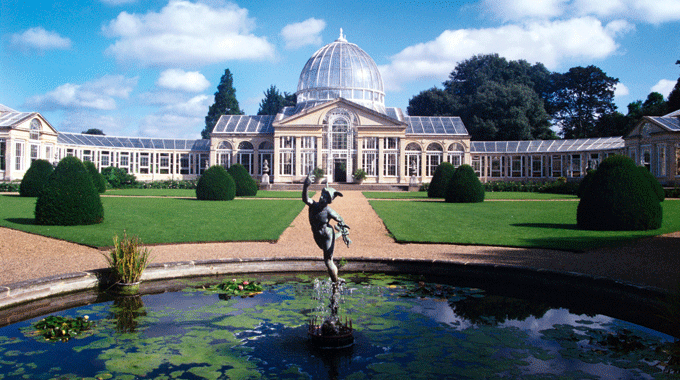
Dogs shall lick his blood as they had done Ahab.” That would be Henry VIII’s fate according to the Franciscan friar William Peto as he preached to the King in 1532. Fifteen years later, Peto’s prophecy appeared to come true. Henry’s casket arrived at Syon on its way to Windsor, where he was to be buried. During the night, blood seeped from coffin in the Abbey’s crypt – and was lapped up by dogs…
The story – possibly true, possibly apocryphal – is one of the more vivid (and certainly one of the grisliest) tales tied to the Syon estate. But the grounds hide hundreds of other fascinating stories. That’s hardly surprising when you consider that the estate is closely linked to over five centuries of British history.
“Syon has been in my family for over 400 years and has seen many ups and downs,” says Syon’s current owner, Ralph Percy, the 12th Duke of Northumberland. “It’s a wonderful house, but there is an unusually disturbing history behind the ornate Robert Adam designs.”
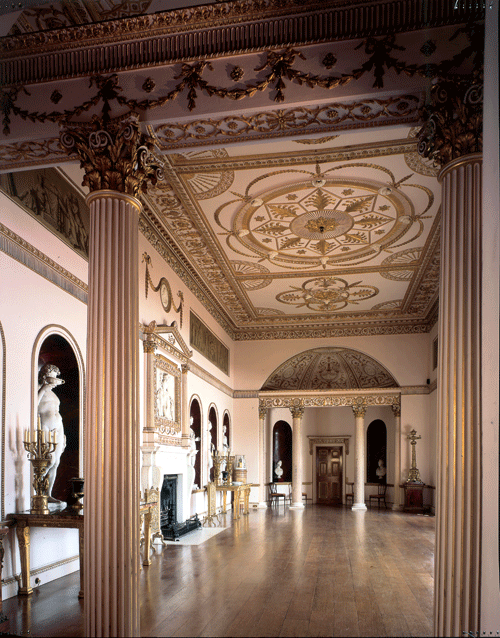
Tudor ties
The story of Syon dates back further than the house itself. In the 15th century, this was the site of a large and very wealthy abbey housing a Swedish monastic order, unusually accommodating men and women, known as the Bridgettines.
Though much of the abbey’s history has been obscured by time, we know that it was linked to some of the most important events in Tudor history. As Henry VIII dissolved the monasteries, the abbey’s Confessor, Richard Reynolds, was hung, drawn and quartered and his head stuck on a spike over the entrance as a warning to others. Its other inhabitants were expelled and Henry’s fifth wife, Catherine Howard, was imprisoned for adultery here in November 1541, before being sent to the Tower of London for beheading.
In 1547, the estate fell into the hands of Edward Seymour, the Duke of Somerset and brother to Jane Seymour. It is thought to be Somerset who began constructing a Renaissance-style house here. As no plans of the house exist before 1593, we can’t confirm exactly what Somerset oversaw before he was executed for treason in 1552. However, we do know that he employed the botanist William Turner to build England’s first botanical gardens at Syon and that the house was largely completed by the time of his death. “Much of the house looks the same as when it was built,” says Chris King, Syon Deputy House Manager. “The ‘footprint’ of the original house, with the exception of the North Wing extension, is as it was when originally completed.”
The estate fell under ownership of Somerset’s rival John Dudley, Duke of Northumberland – which leads to another fascinating link between Syon and British royal history. The Duke’s son, Lord Guildford, was married to Lady Jane Grey who was nominated by Edward VI as his successor. As you stroll through Syon’s Long Gallery, it’s worth remembering that this is where the Duke persuaded her to accept the Crown in 1553. Of course, Lady Jane is now known as ‘The Nine Days’ Queen’ – she was deposed by Mary I, imprisoned, and executed the following year, as was the Duke. “These were rough Tudor times,” says King. “If you aspired to the Crown without sufficient support and you became a focus for dissent, you would probably lose your head!”
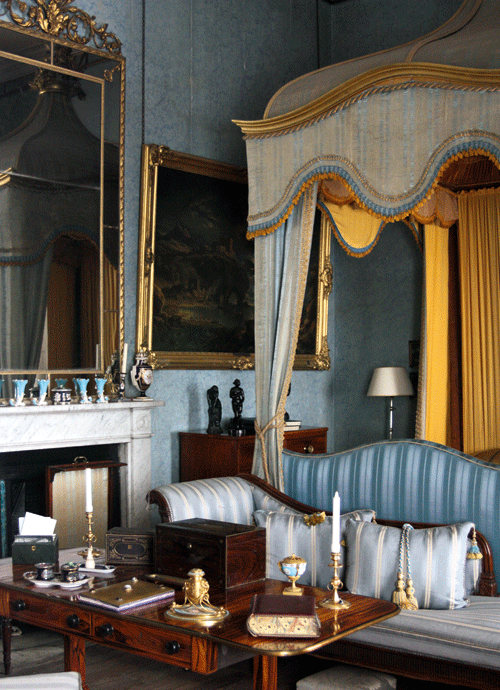
Both Mary I and her successor, Elizabeth I, paid visits to Syon and by 1593, much of the house we see today had taken shape. When Elizabeth died, King James I gave the freehold to his supporter Henry Percy, the 9th Earl of Northumberland, who undertook major repair work and brought many distinct touches to Syon, including the two pepperpot-shaped lodges at the front of the grounds.
Syon’s next owner, Algernon, the 10th Earl of Northumberland, commissioned and acquired works by master artists of the day, and some of these (including a portrait of Charles I’s wife, Henrietta Maria, by Anthony van Dyck) hang in the Red Drawing Room today.
Algernon managed to survive the turbulence of the English Civil War due to what King describes as “his skill for equivocating”. Oliver Cromwell held a council meeting here in 1647, while Charles I visited Syon House several times between 1646 and 1648, largely to see his younger children, who were under Algernon’s care.
Architecture
It is Syon’s Georgian past that can now be most keenly felt and one man can be credited with many of the beautiful interiors – revered Scottish architect and designer Robert Adam (1728-1792). Adam’s work will be familiar to anyone who has visited architectural gems such as Dumfries House and Culzean Castle, but Syon arguably boasts the finest Adam interiors in Britain. Adam was respected for the way he managed to put a modern spin on neoclassical themes, and was influenced by ancient Greek and Roman culture. Adam was hired by Elizabeth Percy and Sir Hugh Smithson as part of their elaborate plan to modernise Syon in the mid-18th Century, which also involved resurfacing the exteriors with Bath Stone.
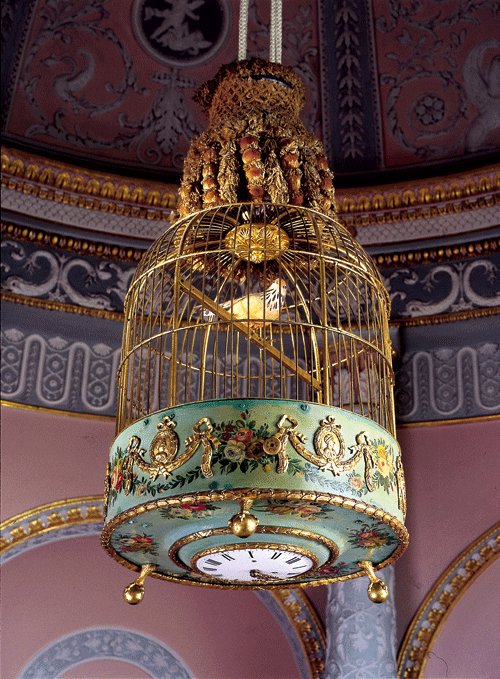
Adam’s work strikes you as soon as you enter the portico coach gate into the grand Great Hall. Adam based the room on a Roman basilica, and the cubic hall is filled with Doric columns, classical busts (including Socrates and Claudius), and bronze statues of The Dying Gaul and Apollo Belvedere.
The Great Hall leads onto a very different but equally arresting Adam-designed room: the Ante Room, where guests would wait to be served dinner. In contrast to the cream-coloured grandeur of the Great Hall, the Ante Room is an explosion of colour. The bright floor is made of a marble imitation with colour pigments known as ‘scagliola’. The room also features classical Roman statues and gilded trophy panels inspired by Rome’s hillside Villa Madama, while Adam cleverly used twelve scagliola-veneered Ionic columns to give the false impression that the room is square.
The first room that Adam and his talented team of artists and designers completed, though, was the Dining Room. This room also benefits from Adam’s distinct neoclassical style. Grand Corinthian columns stand on either side, while frieze panels of Greek mythologies sit above classical statues.
The Red Drawing Room is a reminder of just how much variety Adam brought to the house. It has crimson Spitalfields silk hanging on the walls, and a red honeysuckle-themed carpet created by Thomas Moore. This theme is echoed on the 239 medallions that decorate the ceiling, which depict assorted Arcadian figures. The room’s double-oak doors were designed to protect ladies’ “delicate ears” as they withdrew to the adjacent Long Gallery. This 136-foot long room (“My favourite room in the house,” says the current Duke), replaced the former wood-panelled Tudor Gallery.
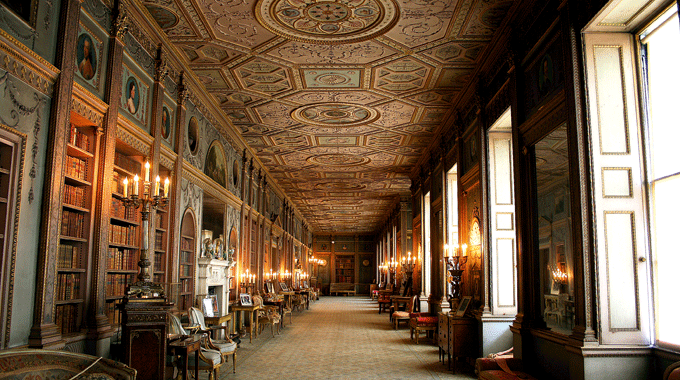
The Long Gallery also features what Adam described as “a style to afford variety and amusement”. It includes mirrors that project upside down reflections, over 3,000 books and two hidden “Turret Rooms” (or boudoirs) at either end. The north-east Turret Room is particularly impressive. Decorated with colourfully-painted stucco and complete with a mechanical singing bird timepiece, this would have made a picturesque location for ladies to talk or play chess.
Syon House courtyard and gardens
Syon’s 200 acres of parkland also underwent extensive work with the help of Lancelot ‘Capability’ Brown, still regarded as one of Britain’s greatest landscape gardeners, and his work can be seen everywhere from Blenheim Palace to Warwick Castle. At Syon, he was brought in to lay out the gardens in the British Landscape Movement style. His alterations included the creation of the serene ‘pleasure garden’. The showpiece is its quarter-mile ornamental lake, which is surrounded by rare trees and flowers from around the world.
The park’s other striking feature is the domed Great Conservatory. Designed by Devon-born architect Charles Fowler, the conservatory housed the 3rd Duke of Northumberland’s exotic flowers. It proved to be the inspiration for London’s Crystal Palace.
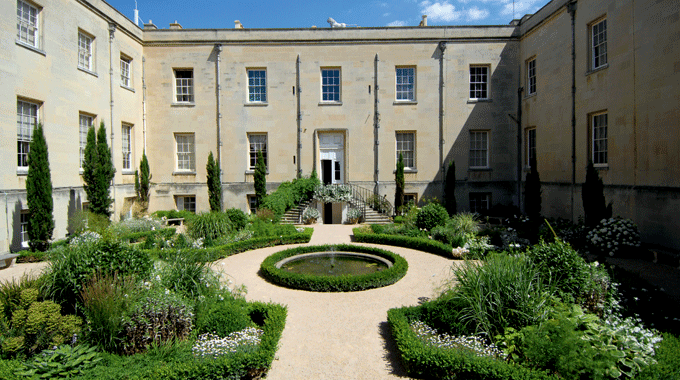
Syon is also closely tied to other key figures in British history. As a young woman, Princess Victoria was instructed here on court manners by Duchess Charlotte Florentia. Visitors can see where the future queen used to sleep in the East Front of the house.
The East Front leads on to the nursery rooms where the current Duke and his siblings used to sleep as children. During World War I and World War II, rooms here were used as overspill from nearby West Middlesex Hospital as London was being pummelled by Doodlebugs.
The current Duke of Northumberland is all too aware of Syon’s sinister side and visitors can get a different take on its history on one of its ghost tours. “As a child, my memories are of hot, sunny days, swimming and playing,” he recalls. “But at night, it was quite spooky with long, dark, creaky corridors and stern ancestors staring down from the walls. Given the turbulent story of Syon, it is not surprising that the odd ghost might lurk there…”
Related articles
Behind the scenes at Parham House






 © 2024
© 2024